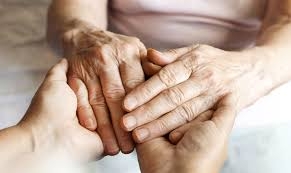Elderly Care Market Sustainability: Eco-Friendly Solutions in Senior Living Communities and Care Services

As global attention increasingly turns toward sustainability and climate responsibility, the Elderly Care Market is undergoing a much-needed transformation. From energy-efficient senior housing developments to eco-conscious healthcare practices, the industry is prioritizing environmental responsibility while ensuring high-quality care for aging populations. This shift is driven by growing awareness, regulatory pressures, and changing expectations among both providers and care recipients. In this blog, we explore the emerging sustainability trends in the Elderly Care Market, and how they’re shaping the next generation of senior care.
1. Why Sustainability Matters in Elderly Care
Senior care facilities are traditionally resource-intensive, consuming high volumes of water, energy, and medical supplies. However, the demand for sustainable alternatives is growing in parallel with the aging population. According to the United Nations, the number of people aged 60 and over is expected to more than double by 2050, reaching over 2 billion. As the market expands, so does its environmental footprint—prompting urgent calls for green reform.
Today, sustainability in elderly care is no longer optional. It’s essential not only to protect the planet but also to meet the expectations of eco-conscious families and stakeholders. Many senior care providers now recognize that environmental responsibility directly impacts long-term viability and community trust.
2. Green Senior Living Communities: A New Standard
One of the most visible changes in the Elderly Care Market is the rise of green senior living communities. These residential spaces are being designed with eco-friendliness at their core, incorporating sustainable construction practices and resource-efficient operations.
A. Energy-Efficient Design
Modern senior housing developments are embracing energy-efficient architectural designs, including solar panels, natural ventilation, thermal insulation, and LED lighting. These not only reduce carbon emissions but also lower utility costs—benefiting both providers and residents.
B. Sustainable Materials
Builders are turning to eco-friendly materials such as recycled steel, low-VOC paints, bamboo flooring, and reclaimed wood. These materials improve indoor air quality and contribute to the overall wellness of elderly residents, who may be more vulnerable to environmental pollutants.
C. Water Conservation
Low-flow toilets, water-efficient landscaping, and smart irrigation systems are being implemented in senior housing projects to curb water consumption—an important step in areas facing water scarcity.
3. Sustainable Healthcare and Daily Operations
Beyond infrastructure, daily operations within elderly care services are becoming more sustainable. From digital transformation to waste reduction, care providers are finding ways to align quality care with environmental responsibility.
A. Waste Reduction in Medical Care
Healthcare waste is a growing concern, particularly in facilities that rely on disposable items for hygiene and safety. Senior care centers are reducing waste through digital documentation (to minimize paper use), reusable PPE where feasible, and recycling programs.
B. Green Procurement and Local Sourcing
Many elderly care providers are turning to green procurement policies, opting for biodegradable cleaning agents, reusable linens, and local food sourcing. Not only does this lower their environmental impact, but it also supports local economies and improves the nutritional quality of meals provided to residents.
C. Digital Health Integration
Digital technologies such as telemedicine, e-prescriptions, and remote patient monitoring reduce the need for travel and paperwork, indirectly contributing to sustainability. As these tools become more prevalent, the Elderly Care Market is also becoming more environmentally streamlined.
4. Environmental Certifications and Standards
To ensure transparency and accountability, many senior living facilities are now seeking green building certifications such as LEED (Leadership in Energy and Environmental Design) or WELL Building Standard. These certifications verify that buildings meet strict environmental and health criteria, offering reassurance to residents and their families.
In addition to infrastructure certifications, operational guidelines such as ISO 14001 (Environmental Management) are being adopted by forward-thinking providers to monitor and improve their environmental performance.
5. The Economic and Social Benefits of Going Green
Implementing sustainability measures in elderly care may require upfront investment, but the long-term economic and social benefits are compelling. Energy-efficient facilities tend to have lower operating costs, and eco-conscious brands are increasingly preferred by families making care decisions for their loved ones.
Green facilities also foster better indoor air quality, natural light, and healthier living environments, which can positively impact the physical and mental well-being of residents. In turn, this leads to higher satisfaction, longer stays, and improved reputations for care providers.
6. Government Incentives and Policy Support
Governments around the world are beginning to offer incentives to support sustainable development in the healthcare and senior living sectors. These include tax breaks, grants for energy efficiency retrofits, and regulatory support for green building initiatives. As policy frameworks continue to evolve, the push for sustainability in the Elderly Care Market will gain further momentum.
7. The Path Ahead: Building Sustainable Care for Future Generations
Sustainability is quickly becoming a cornerstone of strategic planning in elderly care. Whether through the design of green buildings, the adoption of eco-conscious care models, or the implementation of waste reduction initiatives, the industry is aligning itself with broader global efforts to combat climate change.
For elderly care providers, the transition to sustainability is not just a trend—it’s an investment in the future of their residents, their business, and the planet. As more stakeholders—from investors to families—demand environmental accountability, the care models of tomorrow must be as responsible as they are compassionate.
- Industry
- Art
- Causes
- Crafts
- Dance
- Drinks
- Film
- Fitness
- Food
- Игры
- Gardening
- Health
- Главная
- Literature
- Music
- Networking
- Другое
- Party
- Religion
- Shopping
- Sports
- Theater
- Wellness
- News


